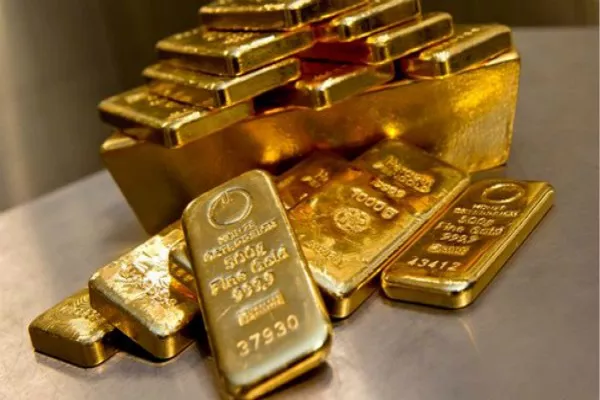In the world of finance and investments, few assets hold the allure and mystique of gold. As one of the oldest forms of currency and a symbol of wealth and prosperity, gold has maintained its prominence throughout history. Understanding the factors that influence the price of gold, its role as an investment, and the mechanics of buying and selling this precious metal is essential for both seasoned investors and newcomers alike.
Current Gold Price
At the time of writing, the price of gold per kilo varies across different currencies. In US dollars, it stands at approximately $58,000 per kilo, while in British pounds, it hovers around £42,000 per kilo. In euros, the price is approximately €50,000 per kilo. It’s important to note that these prices are subject to fluctuation based on market dynamics.
Price Determinants
Several factors influence the price of gold, making it a complex asset to analyze. Supply and demand dynamics play a significant role, with limited supply from mining operations meeting the ever-present demand for jewelry, investment, and industrial use. Economic indicators such as inflation and currency values also impact gold prices, as investors often turn to gold as a hedge against inflation or currency devaluation. Geopolitical stability or uncertainty can further drive demand for gold as a safe haven asset during times of crisis.
Historical Price Trends
Throughout history, gold prices have experienced periods of volatility and stability. From the gold rushes of the 19th century to the gold standard era and beyond, the value of gold has been subject to the ebb and flow of economic cycles and geopolitical events. Despite short-term fluctuations, gold has demonstrated resilience as a store of value over the long term.
Gold as an Investment
Gold is often regarded as a hedge against economic uncertainty and a diversification tool within investment portfolios. Its intrinsic value and limited supply make it an attractive option for investors seeking to preserve wealth and mitigate risk. While gold does not generate income like stocks or bonds, its historical track record as a safe haven asset has earned it a place in many investment strategies.
Buying and Selling Gold
When it comes to buying and selling gold, there are several options available to investors. Physical gold can be purchased in the form of bars, coins, or jewelry from reputable dealers or bullion banks. Alternatively, investors can gain exposure to gold through exchange-traded funds (ETFs), futures contracts, or gold mining stocks. When selling gold, investors should be mindful of transaction costs, taxes, and the reliability of the buyer.
Storing physical gold securely is essential to safeguarding its value. Options range from keeping it in a bank vault to utilizing private storage facilities. Additionally, purchasing insurance coverage can provide peace of mind in the event of theft or loss.
Gold Market Analysis
Analysts closely monitor the gold market, assessing supply and demand dynamics, macroeconomic trends, and geopolitical developments to forecast future price movements. While opinions may vary, many experts believe that gold prices are influenced by a combination of factors, including interest rates, inflation expectations, and global economic conditions. Forecasts for gold prices often take into account both short-term catalysts and long-term trends.
Calculating Gold Value
The value of gold is determined by its purity and weight. Gold purity is measured in karats, with 24 karats representing pure gold. The price of gold is typically quoted per troy ounce, with one kilo equaling approximately 32.15 troy ounces. To calculate the value of gold, multiply the weight of the gold in kilos by its purity and the current price per ounce.
Gold Purity and Karats
Gold purity is expressed in karats, with 24 karat gold being the purest form. Lower karat gold contains a higher percentage of other metals, such as silver or copper, which are added to increase durability and alter the color of the gold. Common karatages include 22 karat, 18 karat, and 14 karat, each representing a different level of purity.
Comparison with Other Precious Metals
While gold is often considered the ultimate store of value, other precious metals such as silver and platinum also play important roles in the global economy. Silver, known for its industrial applications and affordability, is often seen as a more volatile alternative to gold. Platinum, on the other hand, is rarer than gold and has unique properties that make it valuable in industries such as automotive manufacturing and jewelry.
FAQs
What drives the price of gold?
The price of gold is influenced by a variety of factors, including supply and demand dynamics, inflation, currency values, and geopolitical stability.
Is gold a good investment?
Gold can serve as a hedge against economic uncertainty and a diversification tool within investment portfolios. However, like any asset, its suitability depends on individual investment goals and risk tolerance.
How can I buy gold?
Gold can be purchased in various forms, including physical bars, coins, ETFs, and futures contracts, from reputable dealers or financial institutions.
How do I store gold safely?
Storing physical gold securely is essential to protecting its value. Options include bank vaults, private storage facilities, and purchasing insurance coverage.
What is the difference between karats and purity?
Karats represent the purity of gold, with 24 karat gold being the purest form. Purity is expressed as a percentage, with 100% pure gold considered 24 karats.
See Also What Is The Value Of 10k Gold? A Comprehensive Guide
In conclusion, gold holds a timeless allure as a symbol of wealth and prosperity. Understanding its value, the factors that influence its price, and the mechanics of buying and selling gold are essential for investors seeking to navigate the complexities of the global economy. Whether as a hedge against inflation, a safe haven asset, or a diversification tool, gold continues to play a vital role in investment portfolios around the world.


